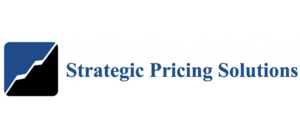Blog
Fear of change and fear of failure often cause companies to abandon their efforts to be more strategic in their pricing decisions. Statements like “We will lose business if we raise prices”, or “Sales knows their customers best and how much their customers are willing to pay” are symptomatic of those fears. While there may be elements of truth in those statements, there is still significant opportunity to improve profitability by making gradual changes that raise margins without putting your business at risk, and build confidence in the process.
The iPhone 6 was released September 19th, and as expected, there was significant buzz and demand for the phone. Similar to the releases of earlier versions of the iPhone, there were some pricing moves that are worth studying. From my perspective, there are both positive and negative pricing lessons we can learn. The first (positive) lesson is identify the differentiating features of your product or service and set prices which capture the value of that differentiation. The opposite lesson is aggressive pricing moves that are easily copied lead to price wars.
In June I wrote a blog, Smart Pricing – Not Price Gouging, in which I discussed a Pittsburgh Post-Gazette article about the price of wines in restaurants. The point of the article was prices may seem high to you or me, but that does not mean the seller is price gouging. We always have a choice to buy or not. Businesses are smart to segment their customers and create options that will appeal to each segment, including price-insensitive segments. I just completed a cycling trip through the Napa and Sonoma valleys, and I observed several examples of segmentation that illustrate the same point.
My wife and I were recently in the market for new patio doors, and our shopping experience demonstrated the importance of value pricing and reiterated that customers will pay more for a better service experience. In fact, one of the salesmen somewhat reminded me of the Dan Akroyd refrigerator repair skit from Saturday Night Live. Our salesman was not showing any rear-end cleavage, but he certainly did not seem concerned about the impression he left, and low prices would not offset that impression.
I recently saw a short white paper on pricing strategy in which they referred to the 5 Cs of pricing. If you do a web search of that term, you will find millions of entries. Most of those links will lead to articles, blogs, and videos that list their version of the 5 Cs.
Personally, I subscribe more to Tom Nagle’s version of the 5 Cs from The Strategy and Tactics of Pricing:
Comprehend,
Create,
Communicate,
Convince,
Capture
We are seeing more and more evidence that prices are increasing in a number of markets, so if you are refining your pricing strategies and plans for 2015, be bold. Don’t wait until everyone else has raised their prices. Be confident and take the lead in raising your prices. Most markets appear ready for it.
You’ve read enough to understand your current cost-plus approach to pricing is nowhere near best practices and you want to price strategically, but your real challenge is deciding how to get there. It is not a trivial effort, but you can begin to make progress in developing your strategic pricing process by incorporating these major […]
“Make him an offer you can’t refuse,” is one of the most famous lines from the Godfather movies, in which Don Corleone tells his lawyer Tom Hagen to get his godson a part in a new movie. The producer, Jack Woltz, did not understand who he was dealing with and declined the Godfather’s offer. The next day he woke up with the head of his prized horse in his bed. Jack Woltz clearly did not know his buyer or he would have accepted the deal up front. Now business is much more civil than organized crime, but before beginning negotiations on the price of anything all sellers would be wise to identify the potential buyer of your product or service. In their book, Pricing with Confidence, Holden & Burton identify four classifications of buyers, each of which has different negotiating implications:
The Price Buyer
The Value Buyer
The Relationship Buyer
The Poker Player
I often find myself in discussions with clients or potential clients about whether lowering prices to take market share is a good strategy. To illustrate the effects of trying to win with lower prices, I look back at this story, sent to me by a former service station manager in Texas.
In 2010, my company started a price war with our local competitors. Within a week I saw the price of gas drop more than thirty cents, and my margins dissipate until we were losing money. The erosion of margins crippled the store’s ability to stay profitable, and by year’s end we were forced to shut down.”
Over the years we have had clients tell us their pricing analytics were strong and did not need help. They thought they could use more help in setting pricing strategies to protect against declines in Average Selling Price (ASP), which was one of their metrics. Our first reaction is always to look at the analytical work the client is doing and how they turn it into insight. What we often find is that the client is measuring something relatively broad that does not lead to any real insight. The goal for all of them ultimately becomes analyzing the right things that can enhance their decision making.
